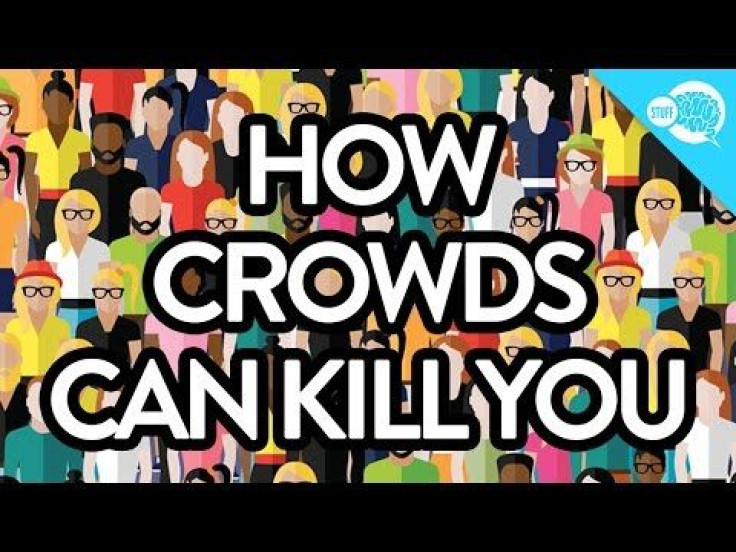Death By Music Festivals: Standing In High-Density Crowds Limits Body Movement, Breathing

Music festivals from Coachella to the Governor's Ball feature dozens of artists and lure tens of thousands of fans to one big, public open space. The inevitable crowds, the waiting on line for food and drinks, and the bathroom, can be overwhelming, making it harder to breathe. But, can crowd conditions actually kill us?
In BrainStuff - HowStuffWorks' latest video, "How Crowds Can Kill You,” host Josh Clark explains the phenomenon called "high-density crowd," where we feel as if we’re being pushed forward against our own will, and then are actually propelling forward.
Clark describes this as a crowd where there are a minimum of six or more people per square meter. This is the threshold because, when we have six people per square meter, individuals in the crowd will begin to lose their ability to move of their own accord. As things get more packed and condensed, the crowd tends to act like jello.
This fluid-like nature can lead to a couple of ways of dying in a crowd. When we first start to get to about six people per square meter, we lose our ability to move. This next step limits our arm movements from our sides. Moreover, as people pack in further and further, the pressure from all sides keeps our lungs from inflating and deflating - losing our ability to inhale and exhale. People suffocate in these crowds because they're squeezed so tightly by the people pressing against them, known as crowd crush.
Another way to die in a crowd is known as progressive crowd collapse. For example, if we have a group of people crowded together in a high- density crowd, and one of them falls, this leads to a domino effect. People who were formerly leaning against the person who collapsed will also fall down, and so on and so forth. This creates a pile up where those at the bottom are literally pressed to death by humans piled on top.
Despite these horrific situations, crowd researchers have found when individuals were told, "Oh, someone ahead is being crushed to death," they respond positively by, say, backing up and alleviating the pressure on the crowd in front. Unfortunately, we're not able to transmit information through crowds like ants, so people end up dying in crowd crushes and progressive crowd collapse because the people in the back are pushing forward. This means there isn’t enough time to process what is being communicated.
Popular misconceptions of death by crowds include stampedes, stomping over one another, and mass panics, crowds moving in a panicked way, but they're both off point. Stampedes do not cost any lives. Chances are if we have enough room to rush over from point a to point b, then there's probably plenty of space for people to get out the way. This isn't a problem with crowd crushes.
Meanwhile, mass panics do not cause death because we can suffocate in a crowd crush, even if we're in a very calm crowd that's entering a narrow corridor, and trying to get out of an exit. People can die being quietly pinned up against other humans trying to leave.
So, should you avoid crowds altogether?
Not necessarily.
Crowd researchers suggest we pay attention, stop talking, and listen for people calling for help, or directing us to "Move back!" or any other indication that there's a crowd crush going on.



























